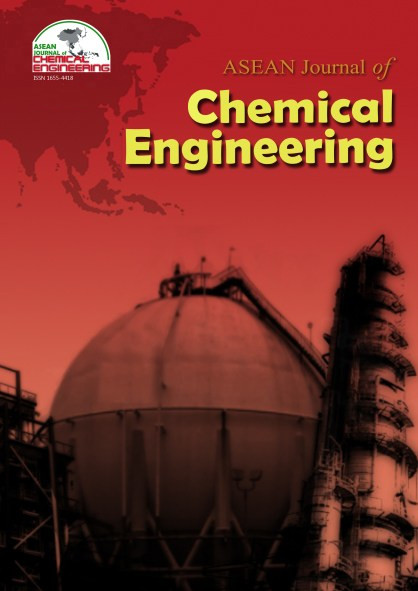Lignin Removal From Aqueous Solution Using Calcium Lactate: The Effect Of Polymers And Magnesium Hydroxide As A Flocculant Aids
Abstract
Palm oil mill effluent (POME) which is mainly associated with lignin has becoming
a major concern due to its highly coloured appearance. The main colourant, i.e. lignin
particles are difficult to be degraded in oil palm conventional biological ponding
system. Coagulation/flocculation could remove the lignin prior to biological treatment
and is considered vital to minimize the recalcitrance nature of palm oil mill effluent
particles. In this study, the coagulation/flocculation process was investigated to remove
lignin particles from aqueous solution. A non-toxic and biodegradable chemical i.e.
calcium lactate was utilized as a destabilizer for the removal of lignin with an addition of
several flocculants aid i.e. anionic polyacrylamide (APAM), polydimethyldiallylammonium
chloride (polyDADMAC) and magnesium hydroxide. The effect of coagulant and
flocculant aids dosage was investigated. From this study, it was found that the optimum
condition was at 0.7g/L of calcium lactate and 0.5-1.0mg/L of APAM with ~64% of lignin
removal. At concentration of 4 mg/L, the removal of lignin for APAM and polyDADMAC
is similar. This result shows that the calcium lactate has potential as a coagulant and the
efficiency can be enhanced with an addition of polymeric flocculant aids.
Copyright holder for articles is ASEAN Journal of Chemical Engineering. Articles published in ASEAN J. Chem. Eng. are distributed under a Creative Commons Attribution-NonCommercial 4.0 International (CC BY-NC 4.0) license.
Authors agree to transfer all copyright rights in and to the above work to the ASEAN Journal of Chemical Engineering Editorial Board so that the Editorial Board shall have the right to publish the work for non-profit use in any media or form. In return, authors retain: (1) all proprietary rights other than copyright; (2) re-use of all or part of the above paper in their other work; (3) right to reproduce or authorize others to reproduce the above paper for authors’ personal use or for company use if the source and the journal copyright notice is indicated, and if the reproduction is not made for the purpose of sale.



